‘Crazy Great Ideas From Crazy Green Thumbs 6’ featured four sculptural tree specimens that had been relocated to Gilroy Gardens, which was formerly Bonfante Gardens, from the now defunct Lost World, which was formerly Tree Circus. While getting gasoline for Morgan in Scotts Valley, I stopped at the former site of Tree Circus for these six pictures. Not much remains to suggest that Tree Circus was ever there. Of these six pictures, only one shows real vegetation, which is a single London plane, Platanus X acerifolia, with a pair of trunks, which form an arch. (Incidentally, Crazy Green Thumbs sent me seed for poinciana and esperanza, which I featured for Six on Saturday almost two years earlier.)
1. Tree Circus Center now occupies the former location of Tree Circus, and subsequently, the Lost World. Progress can be so trivializing. Notice the emblem at the top of this sign.
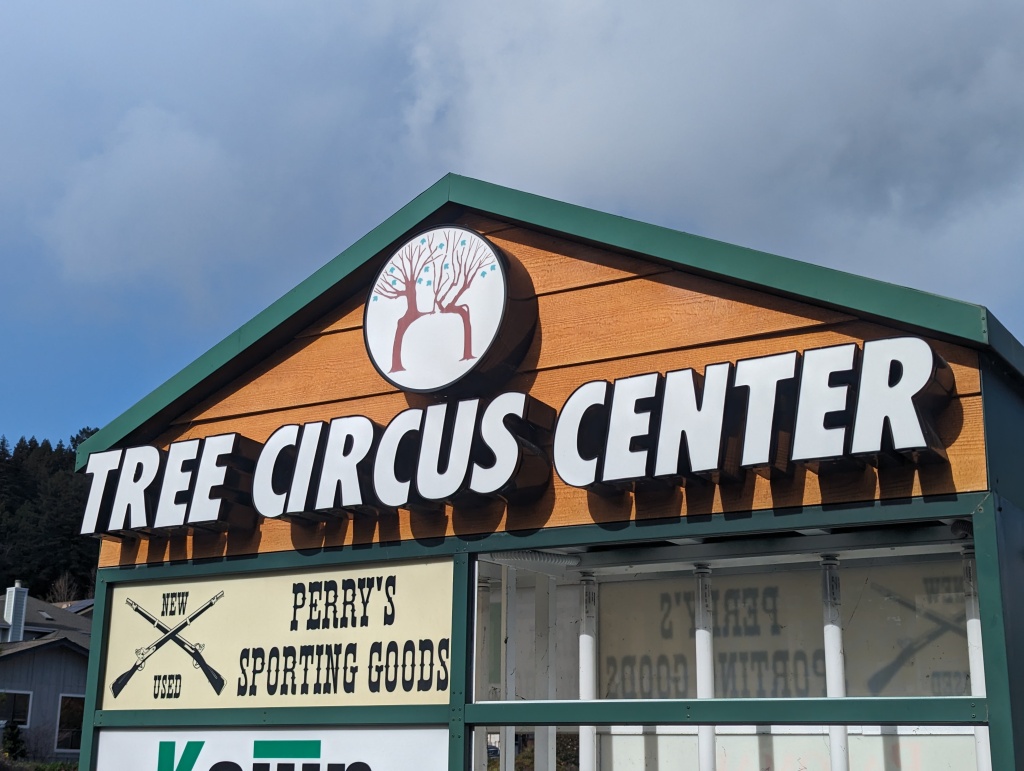
2. The emblem depicts this last tree of the Tree Circus, which was a pair of trees that got grafted together and separated and grafted together. Notice the plaques to the lower left.
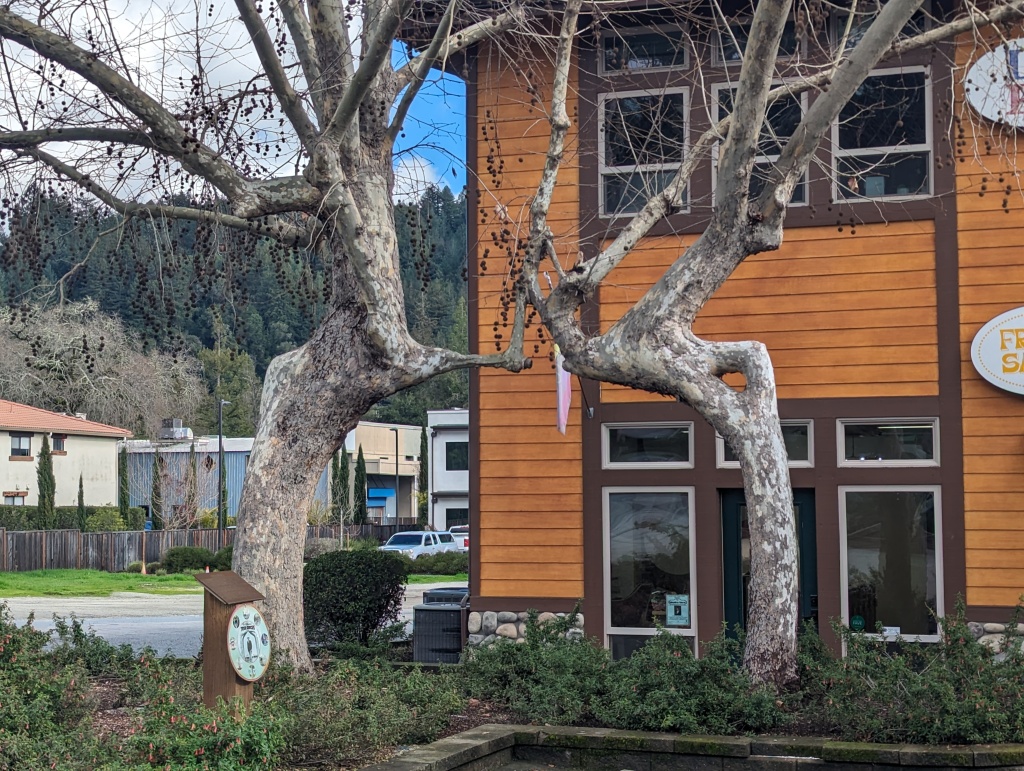
3. This upper plaque very briefly explains the history of Tree Circus and the Lost World, although without mention of what happened afterwards. Notice the other plaque below.
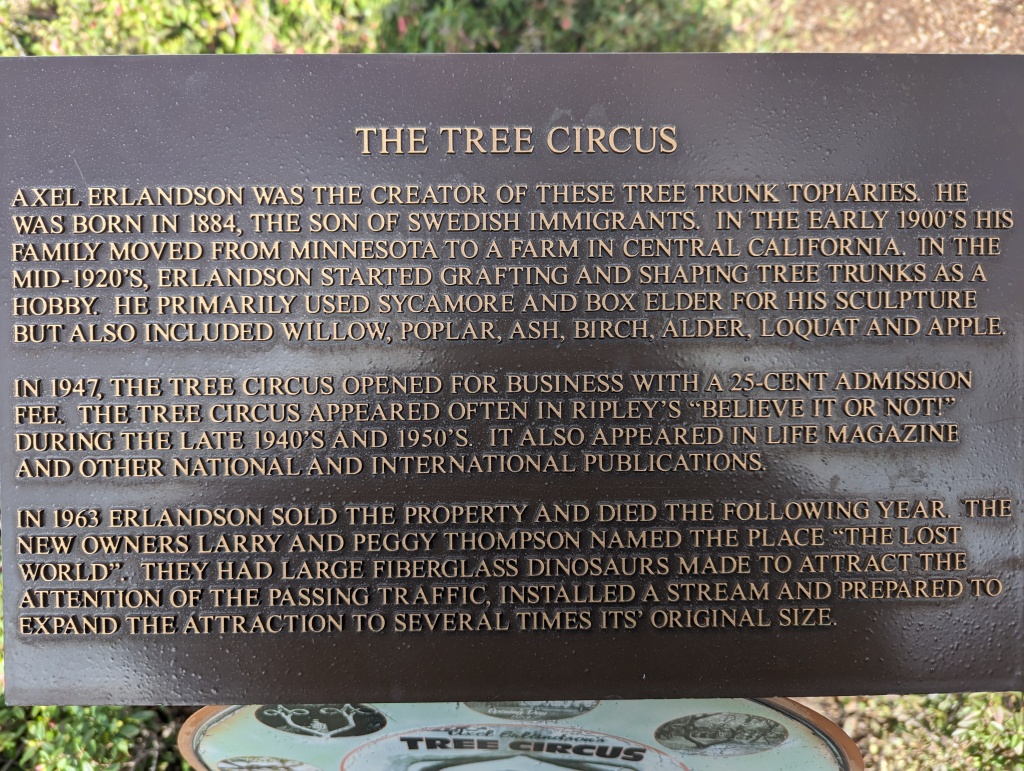
4. This lower plaque features illustrations of a few of the many sculpted trees of the Tree Circus, although woefully weathered. Notice the illustrations to the far right and far left.
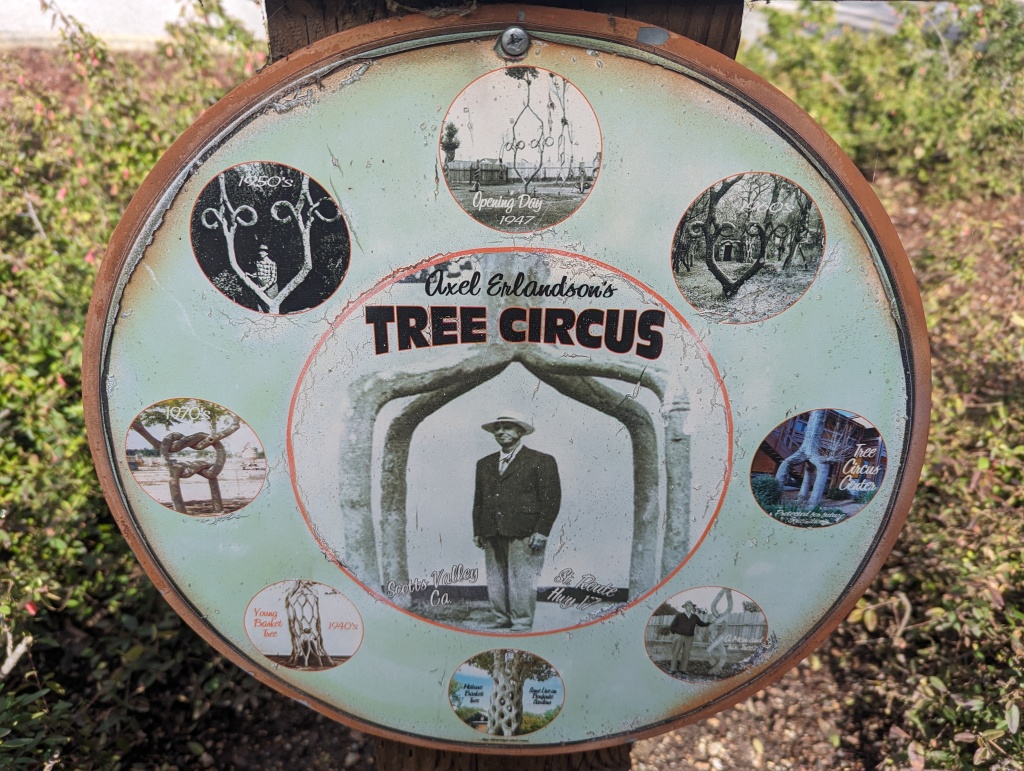
5. This illustration to the far right shows the only other tree of the Tree Circus to remain at the site, although it is now gone. Notice the caption, ‘Protected for future generations’.
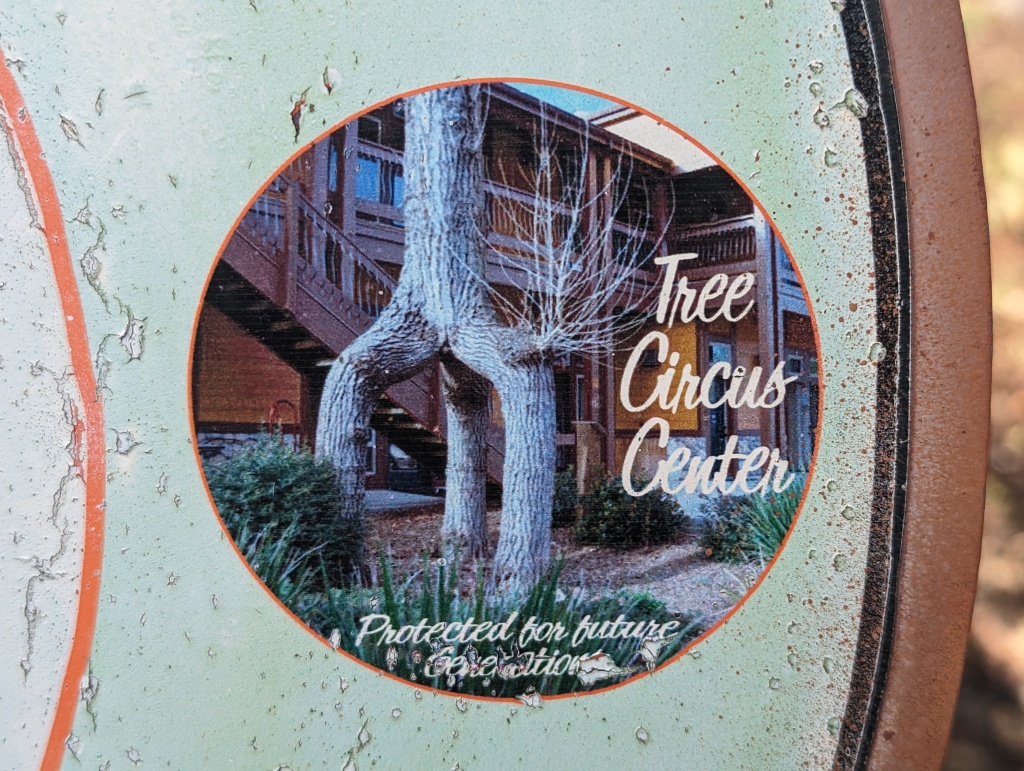
6. This illustration to the far left shows one of the Tree Circus trees that was exhibited in the context of ‘Crazy Great Ideas From Crazy Green Thumbs 6’ by Crazy Green Thumbs.
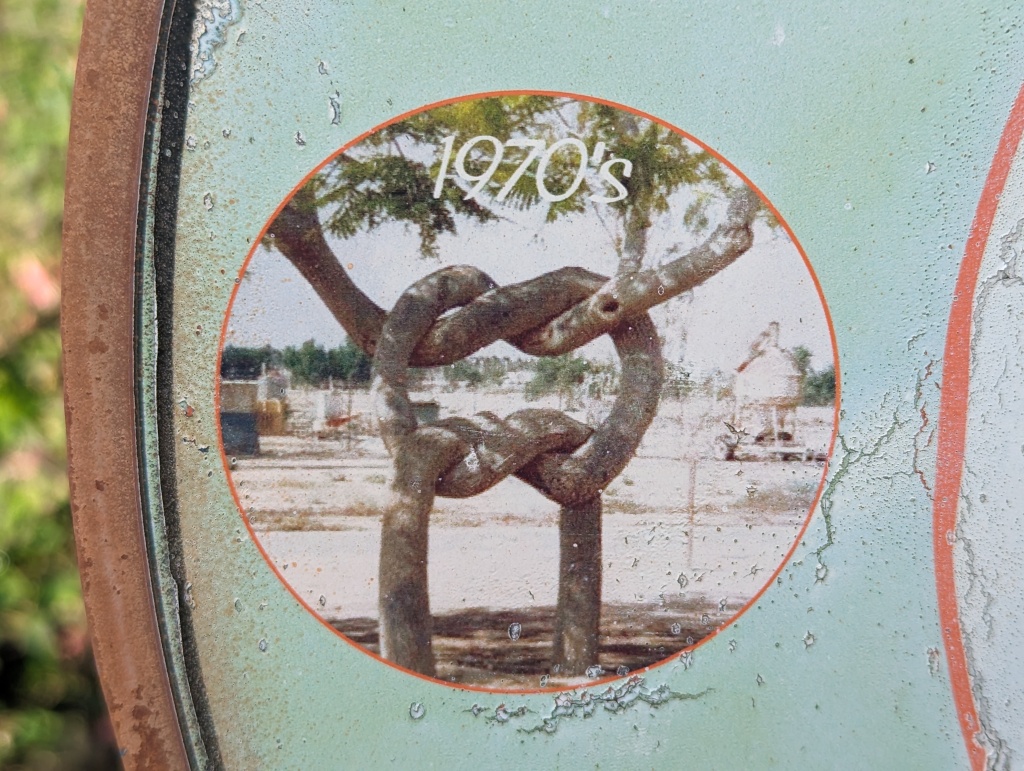
This is the link for Six on Saturday, for anyone else who would like to participate: https://thepropagatorblog.wordpress.com/2017/09/18/six-on-saturday-a-participant-guide/
If someone was doing this today, would that be horridculture? Just plain torture?
LikeLiked by 1 person
Horticulture. It is actually not very different from the grafting, binding and espaliering that we do in nursery production. But of course, pollarding and coppicing are horticulture also, and no one (here) wants to believe it.
LikeLiked by 1 person
Inspirational! I remember growing a Ficus benjamina that was a single tree made from three seedlings plaited together. The trunk remained as an open plait as the tree grew. I lost the tree along the way, but this series of photos brings back fond memories. It is a shame that those beautiful trees are mostly gone now.
LikeLiked by 1 person
One of my colleagues was annoyed that the creator did not share his knowledge with anyone prior to his death; but it is not very different from other common horticultural techniques. I mean, we utilize such techniques without realizing that they are the same.
LikeLiked by 1 person
I think it is more up to imagination than technique. The techniques are fairly straight forward, but the imagination to plant the right trees in the right places, and train them together over time makes the difference.
LikeLiked by 1 person
Yes, these trees were (originally) artistic expression. I would prefer to use them for more practical application.
LikeLiked by 1 person
They are a little weird, but some people might like that kind of thing I suppose.
LikeLiked by 1 person
It is too elaborate for my taste, although I have used such techniques for practical application. For example, I espaliered a pear tree onto a fence where there was not soil below the fence in which the tree could grow. I installed the tree off the edge of the pavement, and espaliered it over the top of the fence for a considerable distance to get it to where I wanted it to be, and then espaliered it from there. (Then some IDIOT who repaired the fence from the other side cut it at the base!)
LikeLiked by 1 person
Oh, how awful. All that work and then that!
LikeLiked by 1 person
OH! It was awful! I was amazed by the vastness of his stupidity.
LikeLiked by 1 person
Hmm, a little Disneyish? I don’t like to prune that much!
LikeLiked by 1 person
Yes, it is quite elaborate. What I dislike about it is that it has no practical purpose. It could very easily be more practical.
LikeLiked by 1 person
True. Topiary is not really my thing.
LikeLiked by 1 person